Industry Roundtable
A Look Ahead
Experts discuss key trends, challenges and opportunities that will impact HME providers and how those businesses can respond to them.
- By David Kopf
- Jan 12, 2023
 Every year members of the HME Business Editorial Advisory Board look toward the industry’s next few months to observe new trends, challenges and opportunities that will impact HEM providers.
Every year members of the HME Business Editorial Advisory Board look toward the industry’s next few months to observe new trends, challenges and opportunities that will impact HEM providers.
This annual roundtable discussion covers some trends providers might already be experiencing, as well as some with which they might have yet to contend. Moreover, the board members offer tips and insights into what providers should be doing to shape plans for addressing these trends.
So, let’s see what trends they have brought into focus:
MEDICARE ADVANTAGE AND MEDICAID MANAGED CARE PLANS
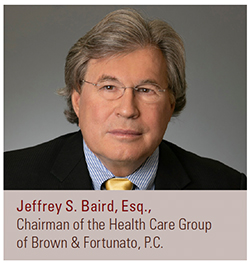 Managed care plans have become “critically important” to HME providers over the past 10 years, according to legal expert Jeffrey S. Baird, Esq., chairman of the Health Care Group of Brown & Fortunato, P.C. Roughly 47 percent of Medicare patients are covered by Medicare Advantage plans, and approximately 70 percent of Medicaid patients are covered by Medicaid managed care plans. Moreover, the CBO predicts the number of Medicare patients covered by Medicare Advantage plans to rise to 61 percent by 2032, notes Tom Ryan, president and CEO of the American Association for Homecare.
Managed care plans have become “critically important” to HME providers over the past 10 years, according to legal expert Jeffrey S. Baird, Esq., chairman of the Health Care Group of Brown & Fortunato, P.C. Roughly 47 percent of Medicare patients are covered by Medicare Advantage plans, and approximately 70 percent of Medicaid patients are covered by Medicaid managed care plans. Moreover, the CBO predicts the number of Medicare patients covered by Medicare Advantage plans to rise to 61 percent by 2032, notes Tom Ryan, president and CEO of the American Association for Homecare.
“Managed care has become a huge part of the lives of DME suppliers,” Baird says. “And I don’t think the industry saw it coming. I think it blindsided us.”
That’s both an opportunity and a problem. The opportunity is a chance to establish tight relationships with massive healthcare plans.
“Where the problem comes in is that we have found that there is very little oversight by CMS and very little oversight by state Medicaid agencies,” Baird says. “Essentially what they say to these plans is, ‘go do your thing.’”
And issues stemming from that lax oversight are already cropping up.
“The key issues remain overzealous utilization management that is not consistent with Medicare FFS and as a recent OIG report pointed out, the prior authorization (PA) requirements are not consistent with Medicare FFS,” he says. “The report found inappropriate denials with as much as 13 percent meeting Medicare coverage rules but denied by the MAP.”
There is currently no regulation that requires the MAPs to only require authorization on what is required by Medicare FFS. However, the plans are not allowed to be more restrictive in medical policy coverage.
The PAs requirements are an important point, Ryan notes, because MAPs are not allowed to be more restrictive in medical policy coverage.
“This has caused inappropriate denials and over-utilization criteria that often require monthly PAs,” he explains. “A burden on the provider again not consistent with FFS.”
“These Medicare and Medicaid plans have been pretty heavy-handed and have caused some problems for all providers and suppliers, including DME suppliers,” Baird agrees.
Fortunately, the industry is starting to be proactive via AAHomecare’s Payer Relations Council (which Baird sits on), which is trying to level the playing field for providers that serve beneficiaries of these plans. For instance, some states are starting to pass laws to control how Medicaid managed care plans work with providers and suppliers, and OIG and CMS have been studying MAPs, which prompted AAHomecare to submit a five-page letter itemizing key problems with the current situation and solutions for them.
Notably, two of AAHomecare’s solutions re to establish a centralized national ombudsman for oversight of Medicare Advantage plans and centralized rate setting.
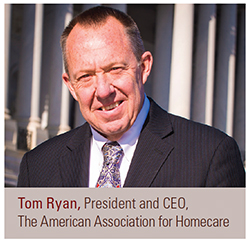 “We would certainly like to see CMS designate a central contact or ombudsman with the authority and responsibility to oversee MAPs compliance with access to care and other requirements,” Ryan explains. “This CMS contact should ensure that adequate recourse is available to DMEPOS suppliers when a MAP is not in compliance and MAPs should not be allowed to simply terminate contracts with DMEPOS suppliers when suppliers seek such recourse.
“We would certainly like to see CMS designate a central contact or ombudsman with the authority and responsibility to oversee MAPs compliance with access to care and other requirements,” Ryan explains. “This CMS contact should ensure that adequate recourse is available to DMEPOS suppliers when a MAP is not in compliance and MAPs should not be allowed to simply terminate contracts with DMEPOS suppliers when suppliers seek such recourse.
“The payment rates need to ensure beneficiaries’ access to care,” he continues. “The MAPs should be required to demonstrate to CMS that they have completed access to care analysis for DMEPOS items and services. These analyses need to be done by DMEPOS-specific product category.”
Moreover, the Improving Seniors’ Timely Access to Care Act (H.R. 3173) recently passed in the House and has now moved into the Senate, where it has been receiving healthy debate at the subcommittee level. The bill would set up an electronic PA process for MAPs as well as establish a real-time PA process for routinely approved products and increase data transparency, Ryan notes.
So, what do providers do about this trend? For now, the key is to stay on top of developments related to these plans and join advocacy efforts when possible. Baird suggests reading whitepapers that have been produced by the Payer Relations Council at AAHomecare, attending event sessions and reading industry articles on the topic, and staying in communication with groups like the Payer Relations Council. “The most important thing that DME suppliers can do is to become knowledgeable,” Baird says.
UPIC AUDITS
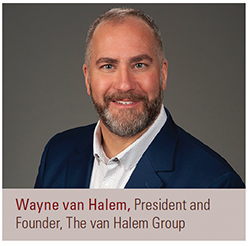 Wayne van Halem, president and founder of audit consulting firm The van Halem Group, says he is seeing an uptick in UPIC audit activity, particularly with respiratory equipment and claims with the CR modifier (i.e., Covid-related claims). He notes that his firm has started to see denials of claims with the CR modifier for items such as not having a reevaluation, which is surprising given that the industry was under the impression those requirements were waived. Fortunately, the UPICs have not been doing extrapolated overpayments, and so far, have focused only on actual overpayments, he adds.
Wayne van Halem, president and founder of audit consulting firm The van Halem Group, says he is seeing an uptick in UPIC audit activity, particularly with respiratory equipment and claims with the CR modifier (i.e., Covid-related claims). He notes that his firm has started to see denials of claims with the CR modifier for items such as not having a reevaluation, which is surprising given that the industry was under the impression those requirements were waived. Fortunately, the UPICs have not been doing extrapolated overpayments, and so far, have focused only on actual overpayments, he adds.
That said, his firm is appealing the findings to the DME MACs. “I have a feeling that the UPICs are going to get overruled on this,” he adds.
So why are the UPICs denying claims based on requirements that weren’t needed during Covid? Given the similarity in the types of claims the UPIC audits are reviewing (oxygen, ventilators, etc.) and that the letters are very standardized, perhaps this is a special project on the part of CMS’s program integrity group to study pandemic-related claims. That suspicion was further confirmed when, after he mentioned the audits to CMS’s provider compliance group —
the part of CMS that oversees audits related to DME MACs and RACs — and that group wanted to see examples of the denials.
Ultimately, the UPIC denials speak to a question that has been on everyone’s minds when it comes to audits: what is CMS going to do as far as auditing pandemic claims once HHS’s public health emergency is officially over? In a meeting with CMS, van Halem got the sense they were aware this was “top of mind” for providers.
“They’re very well aware of the fact that there is going to be a 60-day before the public health emergency is declared over,” he notes. “We asked them how soon after would they be providing guidance on how to handle all these patients? And they said that it might not be immediate, but they’re also not going to wait until day 45 to release the information.
“So, we think it should be soon after that 60-day notice made public that they would release some information to suppliers,” van Halem continues. “We’ll see.”
PRODUCT AND WORKFORCE SHORTAGES
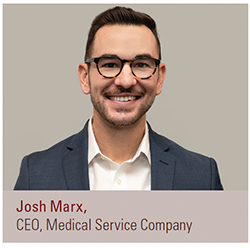 If there’s a word that could describe what providers have been experiencing ever since the Covid-19 shutdowns, it would be “shortage.” The supply chain, product shortages, and workforce scarcity have hit all providers, says Josh Marx, CEO of HME provider business Medical Service Company.
If there’s a word that could describe what providers have been experiencing ever since the Covid-19 shutdowns, it would be “shortage.” The supply chain, product shortages, and workforce scarcity have hit all providers, says Josh Marx, CEO of HME provider business Medical Service Company.
“Our industry is a resilient one,” Marx says. “But the limited availability of equipment tied to supply chain issues has been a difficult one. From CPAP to crutches, HME providers have not been able to source as much product as their patients need.”
What’s made that especially hard is pricing. Most industries have price elasticity to react to the supply-and-demand realities, but because HME providers are largely reimbursed on a fixed pricing model, inflated equipment costs have impacted their bottom lines, Marx adds.
Moreover, all Americans are getting hit by inflation, which is making them look for better-paying jobs. The economy adding so many jobs each month makes it hard for providers to hire and retain staff.
“Many reports show there are two open jobs for every one American seeking a new job, creating a blue ocean of opportunities for employees,” Marx explains. “For HME providers to remain competitive employers, not only do they need to create the right type of work and environment, but they must pay enough to allow their employees to comfortably afford their lifestyle as basic goods cost seven to 10 percent more than they did last year. Again, with fixed and inequitable reimbursement, this is a significant challenge for HME providers, no matter their size.”
Marx adds this cost structure is becoming the “new normal” for HME. This means providers must rethink how their businesses will look. In fact, they might have to make those changes just to keep up.
For instance, the nation’s overall manufacturing and logistical infrastructure are trying to keep up with demand, and that’s going to create change.
“Millions of Americans continue to age with chronic conditions, and they want to be in their homes,” Marx says. “Not to mention, large corporations are designing and acquiring infrastructure to support us there. Hundreds of billions of dollars are being spent to create new layers of homecare support from Amazon to Aetna.”
That means services like outsourcing staff or workflows will continue to play a key role in provider strategy.
“Look at every part of your business and determine where you deliver real differentiated value,” Marx says. “Don’t outsource what should be your ‘special sauce.’”
Similarly, technology will also be important, he adds: “Finding tools to automate simple business tasks will relieve your constrained workforce from performing simple tasks, so they can focus on what matters.”
INFLATION AND RETAIL
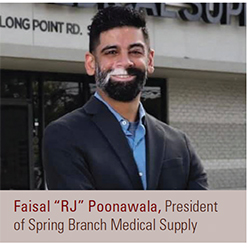 Of course, funded providers aren’t the only providers getting hit by economic factors. Inflation is hitting retail providers heavily as well. Faisal Poonawala’s Spring Branch Medical Supply is a retail-only provider, and where customers would be a lot more liberal in their HME spending, they’re now reviewing their purchases a little closer. That’s particularly true for clients who are on fixed incomes, such as seniors, he adds.
Of course, funded providers aren’t the only providers getting hit by economic factors. Inflation is hitting retail providers heavily as well. Faisal Poonawala’s Spring Branch Medical Supply is a retail-only provider, and where customers would be a lot more liberal in their HME spending, they’re now reviewing their purchases a little closer. That’s particularly true for clients who are on fixed incomes, such as seniors, he adds.
“Everybody is more cost-conscious these days,” Poonawala says. “Whereas before, if someone was coming in for a bath chair, it was easy for them to also get a couple of add-ons, such as a bath mat, or handheld shower.
“Now, the shower chair now costs 20 to 25 percent more than it did a few months ago, and that increase is now impacting the purchase to where that customer might not be willing or able to afford some of those add-ons anymore,” he continues.
The strategic responses to this are tricky. Poonawala says that, for starters, Spring Branch Medical Supply has had to absorb some of the cost increase on some items.
“We haven’t been raising our retail price proportionately to our increase in our wholesale cost,” he says. “So, if the wholesale cost went up 25 percent, I definitely didn’t raise my retail price 25 percent.”
As a result, Poonawala says he has actually decreased any growth in gross profit margin. It’s a tough bite, but it helps him stay competitive, make the sale, and keep customers.
Another strategy is to make some tough decisions about his vendor partnership. In last year’s roundtable, Poonawala highlighted the need for brick-and-mortar retail HME providers to protect themselves when it comes to competing with online pricing. Inflation required him to fast-track his policy.
“If they are not giving a healthy margin for a retailer to be price competitive with the internet, then that fight is over,” he says. “And we’re just showing those vendors the door now and moving over to vendors that are of higher quality and higher values.
“And that’s helping us to maintain a good steady stream of our traditional revenue and margins that we can use to keep ourselves open without having to go extremes, such having to furlough anyone or let anyone go, things like that,” Poonawala adds.
Another inventory strategy is to really drill down on inventory management as a means of managing overhead. This starts with decreasing order frequency.
“We’ve been really focusing on improving the efficiency on our purchase orders,” Poonawala says. “Where I might have had some vendors where I was ordering on a weekly, or even twice-a-week basis, I’m moving more towards a biweekly or monthly order.
“Because of that, we’re spending less time on the ordering process, less time on the receiving process, and also in a dollar sense,” he adds. “If I am subject to any fuel surcharges or freight charges or costs like that, those are getting reduced and consolidated that way.”
An additional inventory management strategy is that the Spring Branch Medical Supply team is also paying much closer attention to what is on the shelves and what isn’t. This helps them make sales on in-demand items and identify those items that aren’t moving.
“We’re keeping a closer eye on inventory and are taking greater responsibility as a team on managing some of the stable products in our showroom,” Poonawala explains. “We’re checking items such as incontinence, bath, safety, and wound care, for example, on a daily basis to make sure that they’re constantly stocked. … It’s amazing how keeping them constantly stocked is helping to capture sales.
“On that same topic, I have one person now tasked specifically with checking product sales performance,” he continues. “And if we see minimal or no sales of certain SKUs over a determined timeframe, then that space is being cleared and we’re putting other items that have a higher frequency of sales.”
OUTCOMES-BASED SELLING
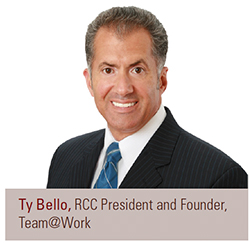 We’ve all heard of outcomes-based care, but Ty Bello, RCC, president and founder of Team@Work says that HME providers need to start engaging in outcomes-based selling. So what does he mean by that?
We’ve all heard of outcomes-based care, but Ty Bello, RCC, president and founder of Team@Work says that HME providers need to start engaging in outcomes-based selling. So what does he mean by that?
“We know that it’s coming very, very close to where Medicare is preparing for outcomes-based reimbursement, right?” he asks. “They’re trying to move from the fee-for-service model that they’ve got today.
“Well, providers have to have outcomes-based processes,” Bello explains. “They have to be measuring outcomes for their various disease management programs. We need to have the capability for outcomes reporting in all of those areas.”
And then that information needs to become the foundation of an entirely new sales process, according to Bello.
It’s a completely different type of selling today.
“We’re always going to be building the relationship,” he says. “We’re always going to be earning the trust, the top part of the sales funnel, that that’s never going to go away.
“But what’s going to change with the provider is that the referral community is going to want outcomes data from you, and you are going to have to present that in a way that’s meaningful for them,” Bello explains. “Also, you have to present the process that you have in measuring those outcomes and how they hold to the standards that Medicare is going to provide for us by 2028.
“So, the sell is different,” he adds. “It’s more educational; it’s more in service; it’s more update.”
This approach will also have a multiplier for providers’ referral sales efforts, because that data will resonate just as strongly — if not more — with third-party payers and other funding sources as well as referral partners. Everyone in the care continuum will be transitioning to an outcomes model regardless of their spot on that spectrum.
“Medicaid, private insurance, the managed care plans, etc. are all going to be asking for the same data, and it’s the providers that can produce that data that can prove that they’re keeping their patients out of the hospital,” Bello says.
BEING PREPARED
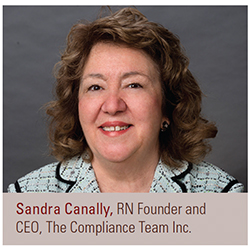 With the worst days of the Covid-19 public health emergency hopefully behind us, Sandra Canally, RN, founder and CEO of accrediting organization The Compliance Team says providers need to do a lot more to build businesses that are more “future-proof” when it comes to unexpected problems.
With the worst days of the Covid-19 public health emergency hopefully behind us, Sandra Canally, RN, founder and CEO of accrediting organization The Compliance Team says providers need to do a lot more to build businesses that are more “future-proof” when it comes to unexpected problems.
“Whether we have a PHE or we don’t, the old Boy Scouts motto stays, ‘be prepared,’” she says. “Well, just because you don’t have an official PHE doesn’t mean that you stop doing those things that we put into place to ready your business.”
For instance, while Secretary of Health and Human Services Xavier Becerra extended the Covid-19 PHE for another 90 days until Jan. 11, 2023 and has also committed to providing at least 60 days advance notice before ending the PHE, CMS has also published guidance advising providers to start planning for a post-PHE future. How many providers will be ready, even with that guidance?
“I believe that a lot of the relaxation of certain requirements has been beneficial to both the provider and the patients they serve,” Canally says. “And would love to see things like telehealth be more readily available because it improves access across the board. That said, after the waivers expire, it goes back to whether or not CMS chooses to keep those things.”
In other words, providers have to be prepared for any eventuality. And that includes a possible surge in patients that are finally feeling safe to resume normal activities, including visiting their provider.
“There are a lot of chronically ill patients that, because of the pandemic, were not managing their disease and not going to the DME when they really needed to,” Canally says. “When we do away with the PHE, the providers will once again then get those people back in their stores. I mean, visits have gone down considerably with physician appointments, wellness visits, with immunizations, with all sorts of visits that the chronically Ill really needed.
“This is where the DME HME provider should be ready to shine once again to bring them back to where they need to be in terms of managing their disease,” she notes. “So, it really gets into more value-based and patient-centered care being delivered by our providers.”
Canally says she looks at this preparedness as more of an effort to maintain continuous quality improvement. The industry has learned some lessons and should absorb them and make them part of standard operating procedure, rather than tabling them until the next PHE.
“If anything, raise the bar, keep going, keep moving forward,” she advises. “It’s always about moving forward.”
GETTING CREATIVE
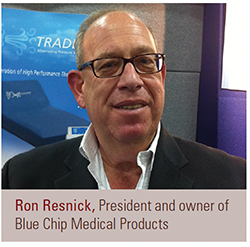 With all the challenges facing providers, Ron Resnick, president and owner of Blue Chip Medical Products, says it is incumbent upon them to constantly search their local marketplaces for new opportunities to provide care.
With all the challenges facing providers, Ron Resnick, president and owner of Blue Chip Medical Products, says it is incumbent upon them to constantly search their local marketplaces for new opportunities to provide care.
“The provider has to get out of his store, and go out and market,” he advises. “They can’t be too busy to sell.”
For example, facilities-based supply is closely aligned with what HME providers already do. Enterprising HME businesses can reach out to hospitals, sub-acute facilities and long-term care facilities and meet with them to explore their facilities-based care needs, he says.
“There are other avenues in which to become successful, but you have to take a start,” he says. “But you have to get out there.”
Similarly, providers can get creative about bringing new clients into their storefronts. For example, they can work with assisted living centers to provide them with a product-education event, Resnick suggests.
“They can bus them in, get two or three vendors to come in there, have some food with some coffee and tea, and demonstrate some products for them,” he advises. “There are a lot of facilities that will take patients on a field trip that is 10 minutes away as long as there is some educational value.”